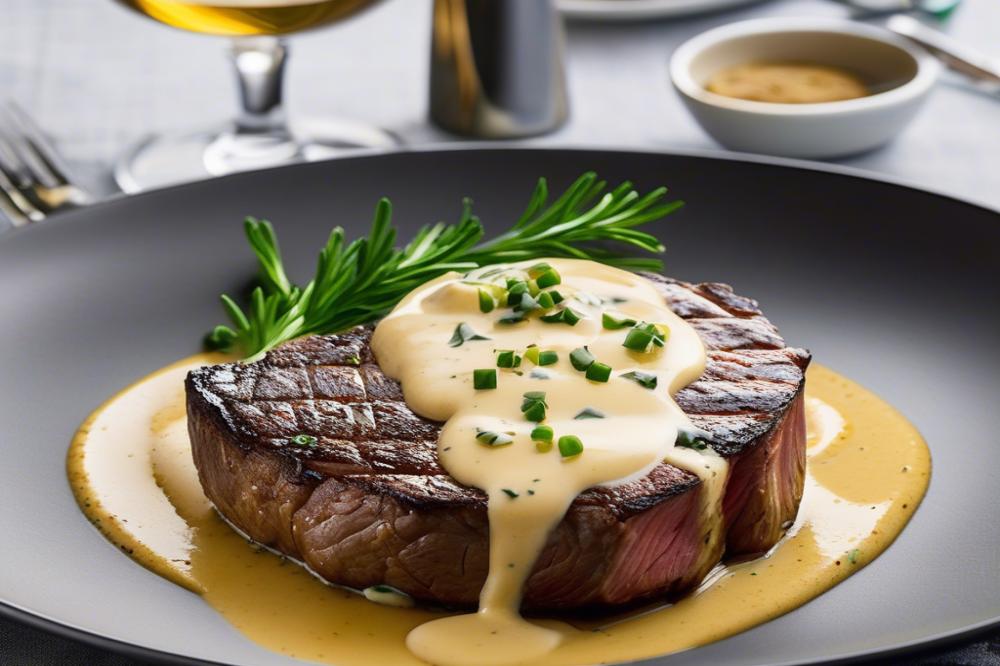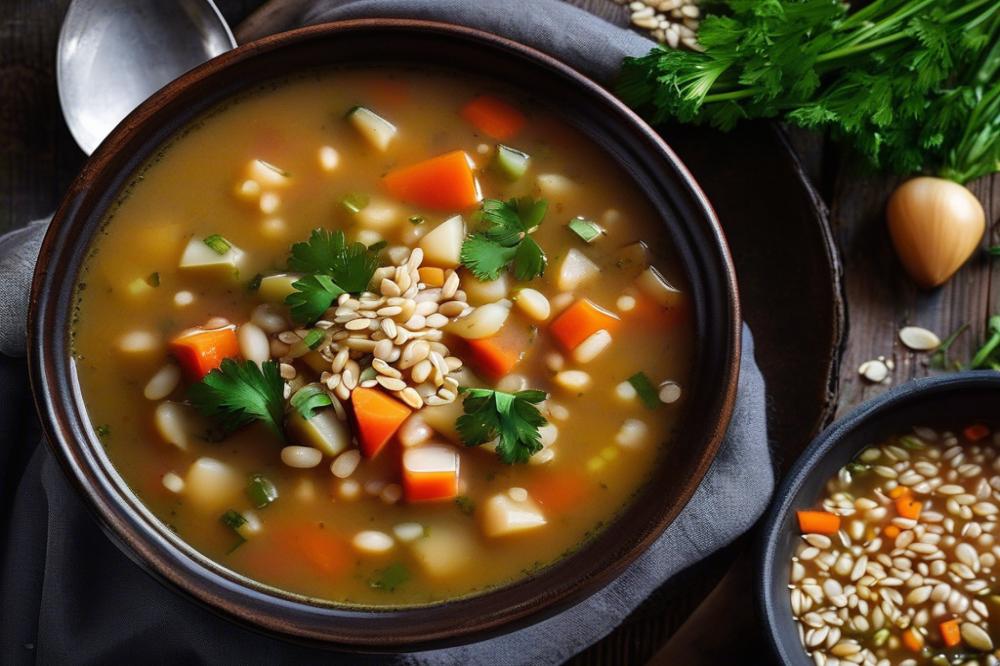Introduction
Bife à Marrare is a culinary treasure that embodies the essence of Lisbon‘s rich food culture. This beef steak dish is essential to Portuguese cuisine, often featured on the menus of the city’s most popular restaurants. As a savory delight, it showcases traditional recipes while evolving to meet contemporary tastes. The history of this steak reflects not only personal preferences but also broader gastronomic trends across the region.
Lisbon‘s culinary history is a tapestry of influences and flavors. Through the years, chefs have brought their creativity to classic ingredients, shaping the dining experience. Bife à Marrare serves as a symbol of gourmet dining, inviting guests to indulge in something both comforting and refined. Its fame continues to grow, making it a prominent choice for locals and tourists alike, all seeking to immerse themselves in authentic Portuguese flavors.
This delicious dish is crafted with care, often accompanied by a rich cream sauce that enhances its appeal. Many chefs take pride in their unique preparations, each striving to deliver a memorable experience. The artistry involved in creating this beloved steak dish illustrates the pride Lisbon has in its culinary offerings. This pride fosters a deep connection between food, culture, and community in the heart of Portugal’s capital.
The Origins of Bife à Marrare

The steak dish known as Bife à Marrare has roots deeply embedded in Lisbon’s culinary history. This dish showcases the evolution of Portuguese cuisine over the years. Its origins can be traced back to Lisbon, where many traditional recipes were created. Aspects of food culture in Portugal often reflect the influences of various regions and the importance of local ingredients.
Beef steak has been a staple in the Portuguese diet for generations. Cooked to perfection, it is typically prepared with a rich cream sauce that enhances its flavors. The savory nature of the dish highlights the skilled techniques of local chefs. Many Lisbon restaurants offer their own versions of this classic, adapting it to modern tastes while respecting its traditional foundations.
Culinary traditions in Lisbon are shaped by historical exchanges with other cultures. The Moors, for example, introduced spices that influenced Portuguese dishes. This blend of flavors can be seen in Bife à Marrare, which incorporates rich and creamy elements alongside a robust beef flavor. Regional ingredients play a critical role in its preparation, ensuring a taste that resonates with the essence of Lisbon.
Farms and markets around the city provide an abundance of fresh produce and quality meats. These local sources ensure that the dish remains authentic and true to its heritage. Through time, this signature steak has transformed into a gourmet offering, representing the taste of both the past and present.
In essence, Bife à Marrare serves as a symbol of Lisbon’s diverse culinary landscape. It embodies the spirit of innovation while staying rooted in tradition. As diners continue to enjoy this savory delicacy, they partake in a rich narrative that reflects Portugal’s ongoing love affair with food. The history of this dish is a testament to the resilience and adaptability of Portuguese cuisine throughout the years.
Ingredients and Cooking Instructions

To prepare this flavorful steak dish, gather the following ingredients:
- 2 beef steaks (about 1 inch thick)
- 1 cup heavy cream
- 2 cloves garlic, minced
- 3 tablespoons butter
- 2 tablespoons fresh parsley, chopped
- Salt and pepper to taste
- Optional: A dash of Worcestershire sauce or hot sauce
This classic recipe has deep roots in Lisbon’s culinary history. Start by marinating the beef steaks. Combine minced garlic, salt, pepper, and a bit of Worcestershire sauce in a bowl. Rub this mixture all over the steaks. Allow them to marinate for at least 30 minutes at room temperature.
While the meat absorbs the flavors, heat a skillet over medium-high heat. Melt 1 tablespoon of butter in the pan until it sizzles. Place the steaks in the skillet carefully. Cook for about 4 to 6 minutes on each side for medium-rare, adjusting time based on your desired doneness. Once done, transfer the steaks to a plate and cover with foil to keep warm.
Next, let’s turn attention to the cream sauce. In the same skillet, add more butter, scraping up any bits stuck to the bottom, as they add flavor. Pour in the heavy cream and bring it to a gentle simmer. Stir in the minced garlic and let the sauce thicken for a few minutes. If you want an extra kick, add a few drops of hot sauce. Finally, mix in the chopped parsley just before serving.
This savory sauce complements the rich flavors of the beef flawlessly. Pour it generously over the rested steaks on plates. For a complete meal, consider pairing with traditional sides from Portuguese cuisine, like roasted potatoes or sautéed green beans. A fresh salad can also elevate the dish’s presentation.
Lisbon restaurants often serve this gourmet steak with a side of rice or a simple vegetable medley. Both options enhance the dining experience without overshadowing the main dish. Enjoy your culinary journey through Lisbon with Bife à Marrare and its delightful cream sauce.
Nutritional Information

Analyzing the nutritional values for the ingredients in Bife à Marrare provides valuable insights into its health aspects. This savory steak dish is often a staple in Lisbon’s culinary history and Portuguese cuisine. Various components contribute to its overall nutrition profile.
A typical serving of beef steak contains a significant amount of protein. Generally, a 3-ounce portion offers about 22 grams of protein. Protein is essential for muscle growth and repair, making this dish beneficial for those who lead an active lifestyle.
When considering calories, a standard steak serving averages around 200 to 300 calories, depending on the cut and preparation method. Many Lisbon restaurants serve it with a rich cream sauce, which can increase the caloric content further. It’s important to be aware of this, especially in the context of traditional recipes that emphasize flavor.
Fat content varies greatly in beef steak, commonly ranging from 10 to 20 grams per portion. This factor is crucial, as some fats are healthy, like those that support heart function. However, moderation is key. Roasted or grilled preparations can be healthier options compared to fried ones.
Carbohydrate levels in this dish are relatively low, often less than 5 grams. For those focusing on a balanced diet, pairing the steak with vegetables or a side dish can boost nutritional variety. Traditional Portuguese recipes often include a variety of sides that enhance the overall meal.
Beef steak plays an important role in many cultures, including Portugal. It serves as a significant source of essential nutrients like iron and zinc, critical for overall health. Understanding the nutritional aspects helps consumers make informed choices.
Those who enjoy gourmet dishes can appreciate how Bife à Marrare blends flavor and nutrition. By enjoying this dish responsibly, food culture can thrive while maintaining health. Balancing indulgence with nutritional awareness ensures a delightful dining experience.
Bife à Marrare in Lisbon Restaurants

Lisbon boasts a rich culinary history, and the inclusion of Bife à Marrare in its dining scene is noteworthy. Many local restaurants feature this savory steak dish, drawing both locals and tourists. A common theme among these establishments is the use of traditional recipes blended with innovative touches.
One of the renowned spots to enjoy this beef steak is “Churrasqueira do Bairro.” Here, chefs prepare the meat with a classic cream sauce and serve it with a side of crispy potatoes. Diners often rave about the balance of flavors and the tender texture of the beef. The warm ambiance of the restaurant also enhances the dining experience.
Another popular choice is “Cervejaria Ramiro,” which is famous for its seafood but also excels in its meat offerings. In this eatery, the Bife à Marrare receives a gourmet upgrade. Chefs focus on high-quality cuts. They expand the dish with aromatic herbs and a rich garlic infusion. The result is both traditional and modern.
Visitors to “Taberna da Rua das Flores” can experience a unique take on the steak dish. This restaurant emphasizes Portuguese cuisine and showcases local sourcing. The chefs here often share stories behind their dishes, allowing diners a glimpse into food culture. Guests appreciate this personal touch, as it connects them to the culinary heritage of Lisbon.
Exploring other options, “A Cevicheria” brings an imaginative approach. The chefs mix classic elements with contemporary flair. They offer Bife à Marrare as part of a rotation that includes unexpected ingredients and techniques. Guests enjoy discovering familiar comforts in unfamiliar presentations. Each bite reveals a connection to the past while celebrating modern tastes.
In essence, Lisbon’s restaurant landscape celebrates Bife à Marrare in diverse ways. Many places retain the traditional essence while others push boundaries to create new experiences. Diners find themselves immersed in the rich flavors of Portuguese cuisine, ensuring their visits are memorable. The savory nature of the dish continues to be a favorite for those exploring this vibrant city’s culinary offerings.
Cultural Significance and Modern Adaptations
In Lisbon, the Bife à Marrare holds a special spot in the heart of Portuguese cuisine. This savory beef steak dish has been a favorite for many generations. People enjoy it not just for its rich flavor, but also for its connection to the country’s culinary history. Restaurants across Lisbon offer it, showcasing its lasting appeal in food culture.
Over time, this classic recipe has adapted. Traditional techniques have evolved, often blending new cooking styles with old favorites. For instance, some chefs play with the cream sauce, experimenting with various herbs or spices. This modern twist makes the dish more exciting for younger diners seeking gourmet experiences. As a result, the rich, buttery sauce may now feature unexpected flavors while respecting its roots.
Globalization has also left its mark on this beloved meal. With influences from around the world, Portuguese cuisine has embraced new ingredients. Exotic spices are now a common addition in certain versions of the steak dish. Each variation tells a story of how culinary exchange shapes local recipes, allowing them to flourish in a contemporary setting.
Despite these changes, the essence of Bife à Marrare remains intact. Many locals and visitors alike continue to savor its traditional charm. It serves as a reminder of Lisbon’s rich gastronomic past while fitting comfortably into today’s dining scene. Whether enjoyed at a cozy eatery or a bustling restaurant, this dish illustrates the timeless nature of Portuguese food culture.
Today, food enthusiasts can find Bife à Marrare served in various forms. Some establishments create elaborate presentations, while others keep it simple. The balance between nostalgia and innovation is evident as chefs prepare the dish with fresh, locally sourced ingredients. Diners appreciate this dedication to quality, reinforcing the dish’s place in modern Portuguese cuisine.
Final Thoughts on Bife à Marrare
Bife à Marrare holds a significant place in Lisbon’s culinary history. This dish not only represents the flavors of Portuguese cuisine but also showcases the importance of traditional recipes. Loyal to its roots, it illustrates how generations have shared food experiences. Each preparation tells a story, connecting people to their culture through shared meals.
Preserving traditional recipes is crucial for maintaining Portuguese food culture. These time-honored dishes serve as a reminder of the country’s rich gastronomic heritage. Efforts to keep such recipes alive encourage new generations to appreciate their roots. By doing so, they contribute to the broader understanding of what makes Portuguese cuisine special.
For those intrigued, trying to make Bife à Marrare at home can be an enjoyable challenge. With a few key ingredients and some patience, anyone can create this delicious steak. Alternatively, seeking it out at one of Lisbon’s gourmet restaurants can provide a delightful experience. Whether cooking or dining, engaging with this dish enriches an appreciation for Portugal’s culinary delights.



